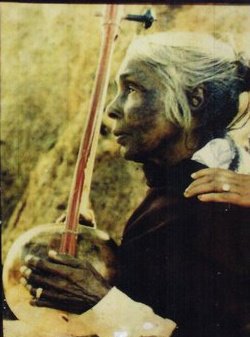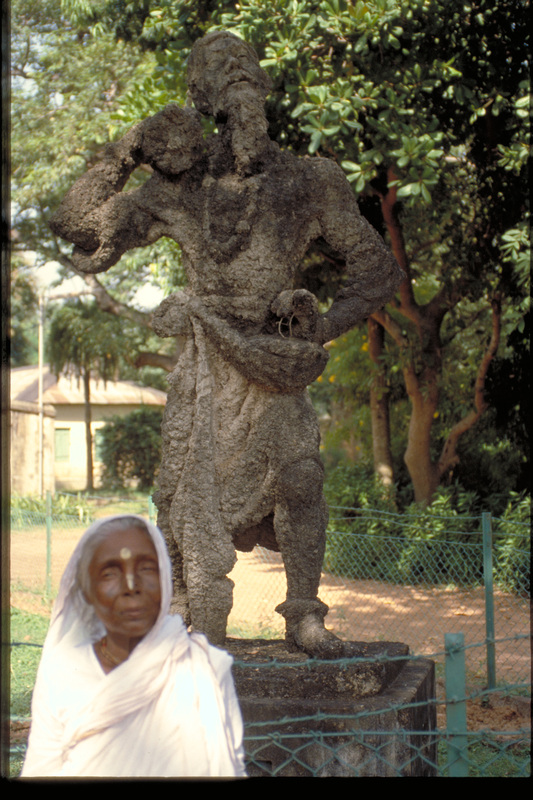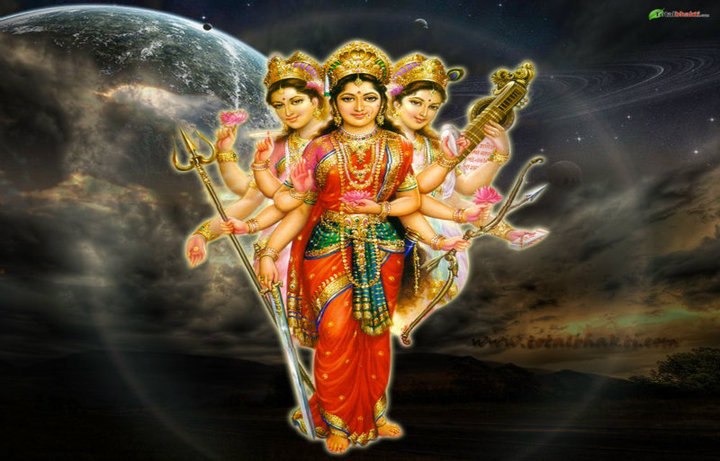 Baul Master Yogi Nabani Das Khyappa Baul
Baul Master Yogi Nabani Das Khyappa Baul The dictionary meaning given to this word is ‘body, envelope or sheath of the body. It also takes a meaning of something that is easily dissolved or worn away to bring forth an idea being something transitory. So, it is foam-like, full of holes.
The general meaning is a composite body, the physical self or vehicle of impermanent character in and through which an ethereal entity lives and works. ‘Sariram khalu dharmasaddhanam’ means the body is the means of fulfillment of dharma. Sarirananda means ananda in the body.
In Gita 4.21, ‘sariram kevalam karma’ means purely physical action. Even the maintenance of physical life cannot be effected without action – asrirayatrapi ….akarmanah: Gita 3.8.
SARIRA TRAYA:
This is the Vedantic doctrine of three bodies, namely Sthula sarira - the physical or gross body; Suksma sarira - the subtle body and Karana Sarira – the causal body.
STHULA SARIRA:
Also sthoola sarira. ‘Sthula’ means type of attribute, gross or physical. ‘Sthula bhutani’ refers to the gross elements: ether, air, fire, water and earth. Sthula sarira refers to the body of the soul in the waking state or Jagra avastha. So, sthula sarira means coarse or gross, not refined, conditioned and differentiated matter. Here sarira implies a form, generally speaking. It is the lowest substance-principle of which man is composed of. Strictly speaking, the physical body is not a principle at all, it is merely a house which follows a course of natural decay. It is man’s expression of his constitution on the physical plane. It is needed for evolution and active work.
The Sthula-sarira or physical hierarchy of the human body is built up of cosmic elements, themselves formed of living atomic entities. It is the sarira that eats, breathes and moves or acts. It is produced by one’s past karmas and now composed of many diverse components which have undergone panchikarana.
In Vedanta, panchikarana is the theory how matter came into existence from the five primordial subtle elements. Sthula sarira is the instrument of Jiva attached to the body and dominated by Ahamkara or ego, the I-ness in which Atman is reflected. Its main features are: Sambava – birth; Jara – ageing and Maranam – death, all happening in the Waking State. What garments this temporary casing?
KOSHA:
This takes the meaning, sheath, vessel or layer. In Vedanta philosophically, koshas are the five sheaths through which the soul functions simultaneously in the various planes or levels of existence.
(1) Annamaya kosha:
Annam means food implying ‘sheath composed of food’ or the gross physical body sustained by food.
(2) Pranamaya kosha:
Prana means vital force implying ‘sheath composed of prana or vital force,’ It is also known as the pranic or health body, or the etheric body.
(3) Manomaya kosha:
Manas means mind, thought, will, wish implying ‘mind-formed sheath’. It is the lower astral body; the instinctive-intellectual sheath of ordinary thought, desire and emotion.
(4) Vijnanamaya kosha:
Is the ‘sheath of cognition’ or intelligence. It is the mental or cognitive-intuitive sheath.
(5) Anandamaya kosha:
Is the ‘body or sheath of bliss; the intuitive-superconscious sheath or actinic-causal body. Anandamaya kosha is not a sheath in the same sense as the four outer koshas. It is the soul itself, a body of light, also called karana sharira, causal body, and karmashaya, holder of karmas of this and all past lives. Anandamaya kosha is that which evolves through all incarnations and beyond until the soul's ultimate, fulfilled merger, vishvagrasa, in the Primal Soul, Parameshvara. Then anandamaya kosha becomes Sivamayakosha, the body of God Siva.
SUKSAMA SARIRA: ‘
Sukshma’ means fine, subtle or belonging to a subtler order of existence than the solid physical. It also means the subtle dimension. This is the subtle body, the psychomental aspect of the human body that exists independent of the physical or gross body. This is the layer responsible for life energy, wanting and reasoning. It is made up of a combination of Kama, Higher Manas, Buddhi and Karma In the spiritually developed man constitutes his or her Spiritual Soul. It is often considered to survive the death of the physical body and is involved in the process of rebirth and eternal life.
LINGA SARIRA:
Suksma sarira is also called Lingasarira. Linga means characteristic mark and sarira being form, implies impermanence. It is so called because it puts one in the mind of atman and reminds one of atman; the beginingless limitation of atman. The Dream State is a distinct state of suksma sarira where the buddhi shines due to memories of deeds done in the waking state. At death, the linga sarira remains in the astral realms and finally fades out. The linga sarira is formed before the sthula sarira is formed and thus serves as a model or pattern around which the physical body is molded and grows into maturity.
KARANA SARIRA: ‘
Karana’ means instrument, cause; the efficient or instrumental cause of something. Karana sarira is the causal body where the individual rests during sound, deep, dreamless sleep where the intellect, mind and senses being reduced to an unmanifested potential condition. Basically it means buddhi becoming dormant and all concepts of time fail. It is also known as Anandamaya kosha, the sheath of bliss. This is the state of Ishvara or the stage of consummation of atman and Paramatman. It is the search of the transcendent Brahman.
Hara Hara Mahadeva
(draft The Human Body)
By Yogi Ananda Saraswathi
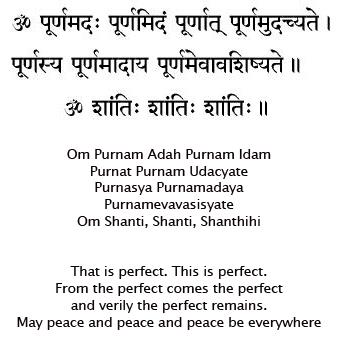

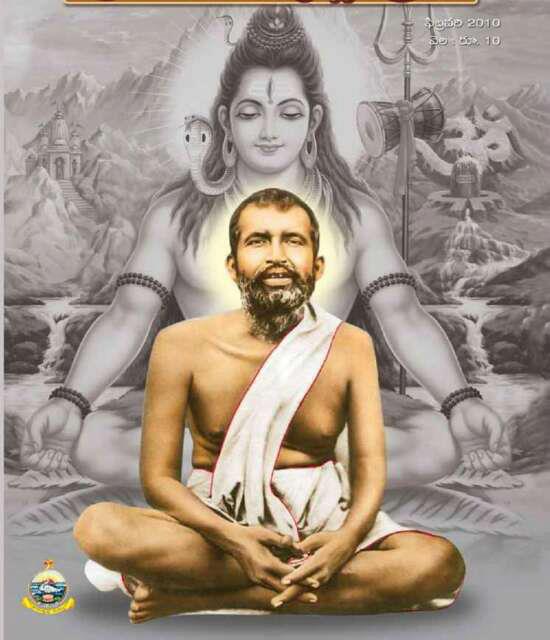

















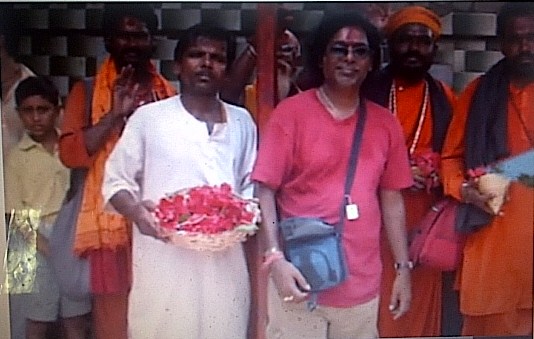




 RSS Feed
RSS Feed
